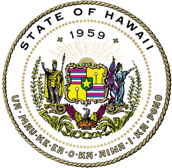Those drinking alcohol may not always pay attention to how many drinks are ingested in one sitting. However, experiencing negative consequences of alcohol use – such as hangovers, blacking out, or mistakes made while under the influence of alcohol – can all cause an individual to wonder how much is normal to drink. Understanding alcohol limits, as well as when such limits are being exceeded, is paramount to determining the need for professional treatment to address unhealthy drinking habits or the presence and effects of addiction.
Moreover, determining what is normal to drink and the mentalities behind a person’s use of alcohol are all important for knowing how to address an individual’s use of alcohol and informing the best treatment programs for effective substance abuse treatment in Hawaii.
Finding What’s Normal to Drink by Defining a “Normal” Drink
The first challenge when determining how much is normal to drink involves actually determining what a “drink” entails. Different drinks can have vastly different amounts of alcohol, and it can be exceptionally difficult to measure how much alcohol may be contained within a given glass or to expect such drinks to affect an individual in the same way.
In the United States, a “standard drink” is any beverage that contains about 14 grams of pure alcohol. This is typically found in either one 12 oz can of beer, five ounces of wine, or one and a half ounces of liquor.
Further, the Centers for Disease Control and Prevention (CDC) defines moderate drinking as two drinks a day for men or one for women. However, if an individual is counting drinks to determine their relationship with alcohol, there may be more factors to consider.
Defining Your Relationship
Even if there is a dedicated definition for what constitutes a “drink,” that doesn’t mean that each individual will experience alcohol in the same way. There is a great deal of variance when it comes to determining each person’s relationship with alcohol. Therefore, knowing how much is normal to drink can be an incredibly complex and personal question.

Societal factors can influence a person’s perspectives on what constitutes an amount that is normal to drink, as well as a person’s upbringing, influences, and more. Similarly, there may also be genetic factors at play that can impact a person’s propensity for developing addiction to alcohol, especially if a parent has previously been diagnosed with addiction themselves. Meanwhile, the use of alcohol to cope with stress, depression, anxiety, panic, trauma, or other mental health disorders is also important to address.
Thus, simply counting the number of drinks a person has does not tell the full story of a person’s relationship with alcohol, or the problematic challenges that may arise from alcohol use. While it is normal to wonder what is normal to drink, asking such a question often demands an individual address a plethora of factors outside of any set number. Likewise, if an individual finds themselves asking themselves such a question in the first place, or at the behest of another, it most likely indicates an already established degree of concern or need for change.

How much is too much drinking is a subjective question but often indicates that one's relationship with alcohol needs to be explored.
More infoWhy Asking What Is Normal to Drink Is the Wrong Question
For some individuals, asking what is normal to drink can be a way of trying to either justify their alcohol consumption or tie a definitive numerical value to their alcohol intake. However, this does little to actually define the relationship an individual has with alcohol. Likewise, not only does it not effectively measure how alcohol is being used or perceived, but this can also be difficult to measure due to societal pressures or cultural influences.

In addition, not all people will react the same to the same amounts of alcohol, depending on a number of other factors. The regularity of alcohol use and building of tolerance, a person’s sex, weight, comparing one’s drinking habits to others, and more can all play a factor in ways that are not accurately reflected in simply counting the number of drinks.
Knowing When It Is Time to Seek Treatment
Each individual’s relationship with alcohol will be unique, and knowing when to seek treatment for each individual’s unique circumstances is paramount. Some signs that an individual would benefit from Hawaii Island Recovery’s detox and alcohol addiction treatment include:
- Drinking more alcohol than intended
- Blackouts or memory loss after drinking
- Consistent hangovers
- Using alcohol to cope with anxiety or to preemptively address perceived stressful situations like work stresses or interpersonal challenges
- Workplace attendance or performance is impacted by alcohol use
- Looking forward to when the next drink will be “acceptable”
- Increased difficulty tending to personal responsibilities
- Compromised budgets or finances as an individual purchases more alcohol
- Feeling like alcohol is necessary
- Others have inquired about one’s alcohol use
What constitutes a healthy and safe level of drinking will vary, and trying to track a person’s relationship with alcohol by what is normal to drink doesn’t provide the entire picture. Rather, working with the professionals at Hawaii Island Recovery can empower each individual to truly explore their relationship with alcohol and the forces that influence their use to determine if professional detox and treatment are necessary, or how to begin addressing and changing their use of alcohol in daily life.

Defining how much is normal to drink is only part of the journey toward understanding your relationship with alcohol. At Hawaii Island Recovery, we can help you explore the different aspects of alcohol use, mental health disorders, beliefs, stresses, and challenges that may inform your use of alcohol, using the most personalized approaches to sobriety to help you begin your journey to a sober life. From individualized case management and strategies to connecting you to a community of peers, we embrace a holistic approach to sobriety that addresses emotional, physical, social, and spiritual healing to create a comprehensive and sustainable approach to sobriety. To learn more about our substance abuse treatment in Hawaii, call (866) 390-5070.
 Hawaii Island Recovery
Hawaii Island Recovery 









